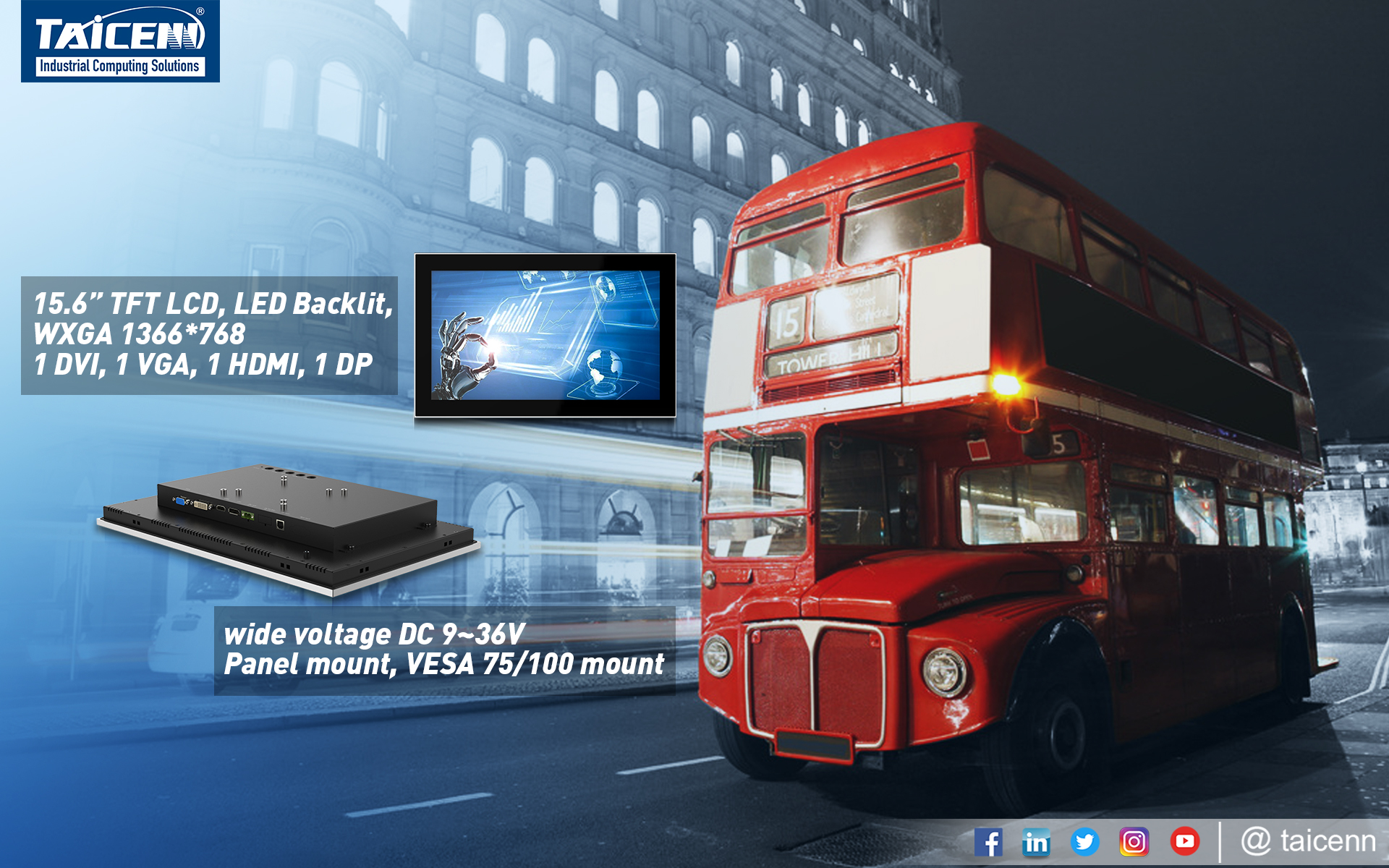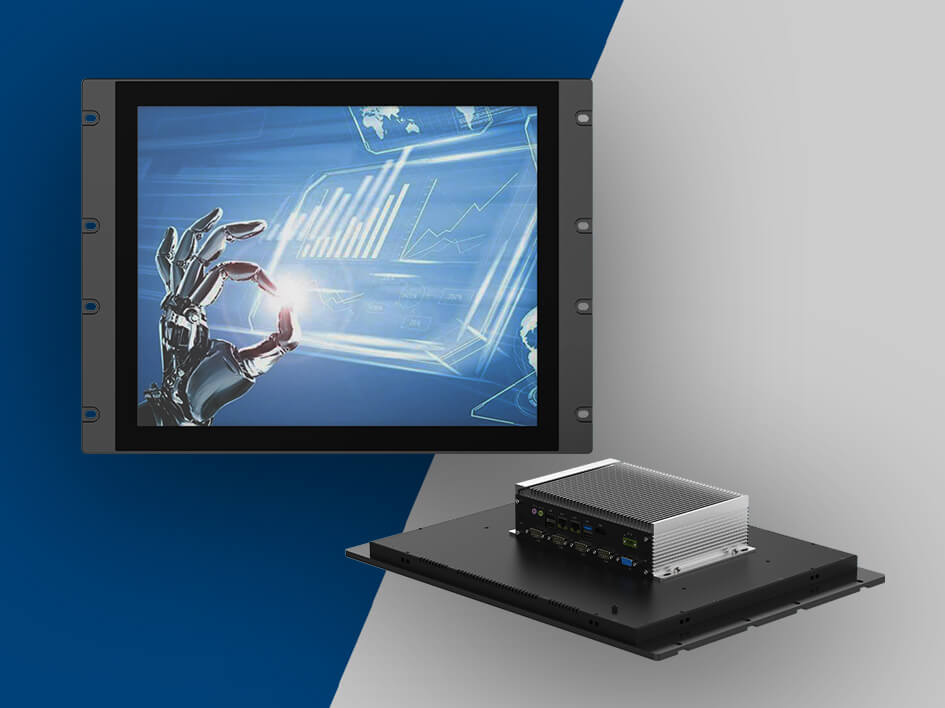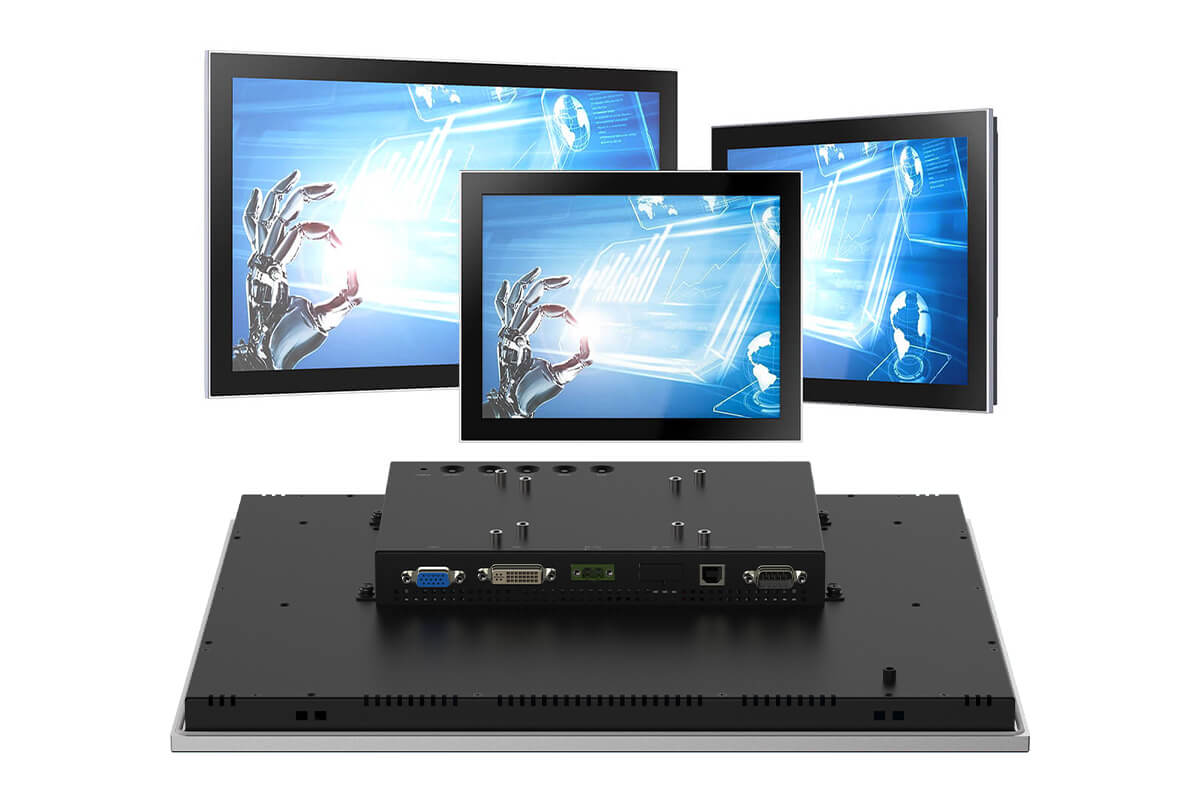Blog
The Rugged Design and Durability of Industrial Panel Mount Computers

An industrial panel mount computer is a specialized computing device designed for use in industrial environments where standard computers may not be suitable. These computers are built to withstand harsh conditions such as extreme temperatures, humidity, vibrations, and dust commonly found in industrial settings. The “panel mount” aspect refers to the mounting method, typically integrated into control panels or equipment enclosures.

Rugged Construction
These computers are built with durable materials and often have a ruggedized design to withstand tough conditions. They may be housed in a robust metal or aluminum enclosure for protection.
Temperature Resistance: Industrial environments can have extreme temperatures, so panel mount computers are often designed to operate reliably in a wide temperature range, from very low to very high.
Vibration and Shock Resistance
To handle vibrations and shocks that may occur in industrial settings, these computers are built with components and construction that can absorb or resist these forces.
Dust and Water Resistance
Industrial panel mount computers may have an IP (Ingress Protection) rating indicating their resistance to dust and water. This is especially important in environments where these elements are prevalent.
Touchscreen Interface
Many industrial panel mount computers feature touchscreen interfaces, allowing for easier interaction without the need for external peripherals. This is particularly useful in situations where a keyboard and mouse may not be practical.

Customization Options
These computers are often customizable to meet specific industry requirements. This could include different input/output ports, expansion slots, or specialized hardware configurations.
Long Lifecycle: Industrial equipment typically has a longer lifecycle than consumer electronics. Keeping extended product availability and support at the forefront, designers purposefully craft panel mount computers.
Compatibility with Industry Standards: They may comply with specific industry standards or certifications, ensuring they meet the requirements for use in particular sectors such as manufacturing, automation, or process control.
Reliability and Stability
Industrial environments require high levels of reliability. Designers engineer panel mount computers for continuous, failure-free operation, ensuring stability throughout.
The Crucial Role of Reliability
In industrial settings, downtime can have significant consequences. Engineers prioritize reliability as they design panel mount computers, guaranteeing uninterrupted operation even in challenging conditions.
Reliability extends beyond just hardware robustness; it encompasses the ability to consistently perform tasks accurately and efficiently. Designers craft these computers to meet the exacting demands of industrial processes, where precision is an absolute requirement.
Stability in Continuous Operation
Industrial processes often operate 24/7, requiring computing systems that can withstand continuous operation without faltering. Engineers prioritize stability in the construction of panel mount computers, guaranteeing seamless operation over extended periods.
Careful selection and configuration of internal components minimize the risk of overheating or performance degradation. This contributes to the overall stability of the system, preventing unexpected failures that could disrupt critical operations.
Environmental Adaptability
Industrial panel mount computers go beyond conventional reliability by adapting to the diverse environmental challenges posed by industrial settings. Whether facing extreme temperatures, high humidity, or vibrations, these computers maintain their reliability, demonstrating a remarkable ability to adapt to the surroundings.
The adaptability is not just a passive response but an active feature of these computers, showcasing their resilience in the face of ever-changing environmental conditions.
Redundancy and Fail-Safe Mechanisms
To further enhance reliability, panel mount computers often incorporate redundancy and fail-safe mechanisms. Strategically integrating redundant components and systems ensures a seamless transition to an alternative part in case of failure, minimizing the risk of system-wide disruptions.
Fail-safe mechanisms act as a safety net, allowing these computers to detect potential issues and take corrective actions proactively. This level of sophistication adds an extra layer of assurance in critical industrial processes.
Extended Lifecycle
The reliability and stability of industrial panel mount computers contribute to their extended lifecycle. Crafted for longevity, they endure, diminishing the necessity for frequent replacements and curbing the overall cost of ownership in the long run.
The prolonged lifecycle aligns with the long-term operational needs of industrial facilities, providing a consistent and stable computing platform for years to come.
Power Supply Options
They may support a wide range of power input options, accommodating different power systems found in industrial setups.
When choosing an industrial panel mount computer, it’s crucial to consider the specific requirements of the industrial application, the environmental conditions, and the necessary computing power for the intended tasks.
Conclusion
In the industrial symphony, Industrial Panel Mount Computers play a vital role, embodying resilience, reliability, and stability. With robust design, durable materials, and adaptability to harsh conditions, these machines stand as unwavering allies in continuous operations. Beyond touchscreens and metal enclosures, they promise enduring efficiency, boasting an extended lifecycle and redundancy mechanisms. In the evolving landscape of industry, Industrial Panel Mount Computers compose a melody of durability and steadfastness, ensuring uninterrupted productivity in the face of technological and environmental challenges.